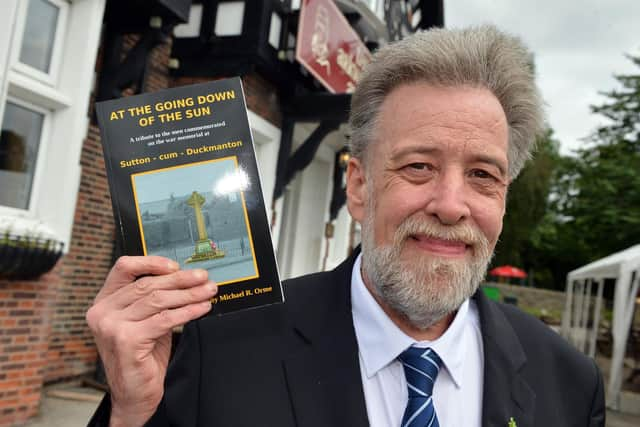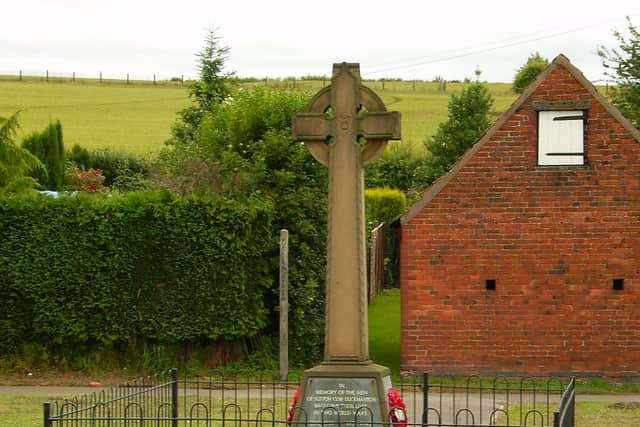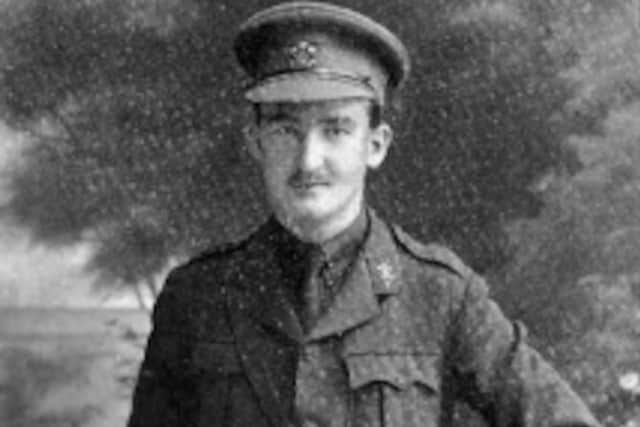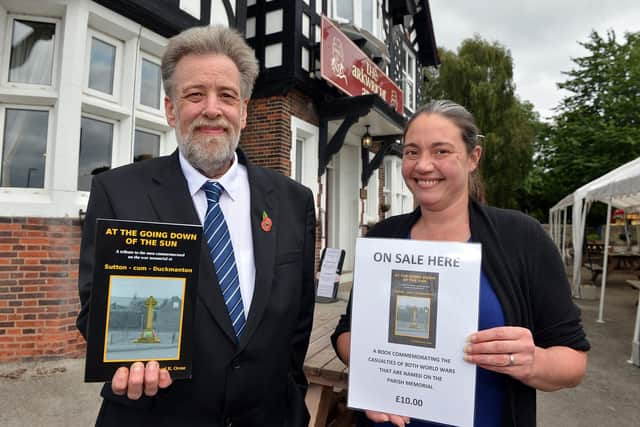Chesterfield author preserves stories of First and Second World War casualties for future generations
and live on Freeview channel 276
Michael Orme, who lives in Brimington, said: “A list of names on a memorial for future generations is going to be meaningless. Unless we can attach some stories to these names then I would strongly suggest that the future of our memorials might not be a rosy one.
"We’ve lost several already. There are two missing memorials from schools in Bolsover that were demolished. No-one knows what became of a memorial plaque on an organ in a church in Mastin Moor which was closed down and sold off.
Advertisement
Hide AdAdvertisement
Hide Ad"There are well over 120 war memorials in a ten-mile radius of Chesterfield which is a measure of the impact it had on the community at that time.”


Michael has just published a book, entitled At The Going Down Of The Sun, which tells the stories of the First and Second World War casualties whose sacrifices are honoured on the war memorial at Duckmanton.
He said: "It was quite a detective process trying to work out who they were. One of the problems was that the spellings of surnames used on the memorial proved not to be trustworthy, as the names on the metal plates vary in their spelling from the original inscriptions that lie on the stonework beneath them.
"I have examples where a man used one spelling of his surname whilst his wife used another!
Advertisement
Hide AdAdvertisement
Hide Ad"There was one name on the memorial that filled me with dread – the name of E. Smith. When you look at the Commonwealth War Graves website there are 770 E Smiths from the First World War that didn’t come home.”


Michael, 60, used what he calls the golden triangle to authenticate identification. He said: “This involves taking a name from the memorial, finding a casualty that matches that name and then finding evidence that links that casualty back to the parish.”
His painstaking research involved scouring obituaries in the Derbyshire Times and Derbyshire Courier.
He said: "Sometimes you get a real glimpse of the personality of these people. There were a couple of them who went to join up and were rejected when they first went and used to go to different recruiting stations until they were accepted.
Advertisement
Hide AdAdvertisement
Hide Ad"One staggering thing was the vast number that enlisted as volunteers becase there was no conscription until 1916. They left wives and children behind them to go. It was quite a stunning act and quite common in this area from all the memorials that I’ve seen.”


During his research Michael found no evidence to substantiate modern-day belief that the army filled its ranks with underage boys. He said: “Most of those who lost their lives in the First World War were in their mid to late twenties and most of the Second World War casualties were in their early twenties.”
His detective work uncovered the story of William Ernest Ind, whose father was a teacher at Duckmanton School and an organist at Duckmanton Church. William, a bachelor who studied at university, enlisted into the Territorial Force before the First World War, becoming a member of the 1st/15th battalion of Prince of Wales Own Civil Service Rifles where he rose through the ranks. Described by his battalion as the finest soldier that they ever had, William was an acting Brigade Major when he lost his life at the age of 23.
Michael’s book contains details of the soldiers’ service, how and where they died and the family they left behind.
Advertisement
Hide AdAdvertisement
Hide AdAt The Going Down Of The Sun is on sale for £10 at the Arkwright Arms, just 200 yards away from the war memorial. Michael said: “What I’m hoping is that people will buy a book, enjoy a pint and take a gentle stroll out and look at the memorial.”


His publication is a spin-off from a report on the memorial that he compiled at the request of Sutton cum Duckmanton Parish Council whose chairman suggested that Michael turn his research into a book.
Michael said: “If this book is a success, we are looking at the possibility of doing a similar publication for Barrow Hill.
"Another that I’m doing concerns a memorial in Chesterfield that has been lost for almost 100 years. They had a roll of honour in this particular parish that had 72 men who fell in the First World War and they haven’t been remembered in that parish since the late 1920s. I’m expecting that book to run to about 400 pages and be available some time in the spring.”
Advertisement
Hide AdAdvertisement
Hide AdMichael, who is retired, has had an interest in military history since the age of nine. He said: “Every single aspect of it has always fascinated me – anything from 1800s up to the end of the First World War.
"I didn’t take a lot of interest in the First World War until about 15 years ago because I always viewed it as too big and too complicated. I started going to Belgium and would be driving through places and think this place rings a bell and then find out they were First World War sites. It was like driving through a map of the Western Front in a lot of places. I started looking into the First World War, reading about it and researching it.
"I am known locally as a researcher for the First World War and the local people who served in it. I’ve put on a few exhibitions at Barrow Hill and Staveley Armed Forces Day and did a lot of work putting together the website for Barrow Hill and the memorial there during the centenary year.”